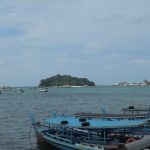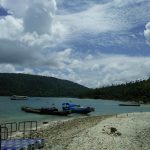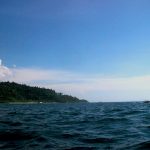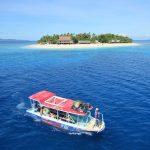Download links
How to install Discover the Hidden Beauty of Sebu Island APK?
1. Tap the downloaded Discover the Hidden Beauty of Sebu Island APK file.
2. Touch install.
3. Follow the steps on the screen.
Description
Sebu Island, a hidden gem in the Philippines, boasts some of the most pristine and untouched beaches in the archipelago. Nestled in the southern region of the country, this island is often overshadowed by its more popular neighbors, yet it offers a serene escape for those seeking tranquility and natural beauty. The beaches here are characterized by powdery white sand, crystal-clear waters, and lush greenery that frames the coastline.
One of the most notable beaches is the secluded Malabuyoc Beach, where visitors can bask in the sun without the crowds that typically plague more commercialized destinations. The gentle lapping of waves against the shore creates a soothing soundtrack, making it an ideal spot for relaxation and reflection. In addition to Malabuyoc, the beaches of Sebu Island are dotted with hidden coves and rocky outcrops that invite exploration.
The coastline is interspersed with vibrant coral reefs just offshore, making it a perfect location for snorkeling and diving enthusiasts. The unspoiled nature of these beaches allows visitors to connect with the environment in a way that is increasingly rare in today’s world. The absence of large resorts and commercial establishments means that one can enjoy the natural beauty without the distractions of modern life.
As the sun sets over the horizon, painting the sky in hues of orange and pink, the beaches transform into a magical setting, perfect for evening strolls or quiet contemplation.
Key Takeaways
- Sebu Island boasts untouched beaches with pristine white sand and crystal-clear waters, perfect for relaxation and sunbathing.
- The rich marine life of Sebu Island offers opportunities for snorkeling and diving, with colorful coral reefs and diverse sea creatures to explore.
- Visitors can marvel at the enchanting waterfalls of Sebu Island, such as Tumalog Falls and Kawasan Falls, and take a refreshing dip in their natural pools.
- Immersing in the culture and traditions of Sebu Island allows travelers to witness traditional dances, rituals, and festivals that showcase the island’s vibrant heritage.
- Sebu Island is home to a thriving wildlife, including unique bird species and exotic animals, making it a paradise for nature enthusiasts and wildlife photographers.
- Indulge in the local cuisine and delicacies of Sebu Island, such as lechon (roast pig), fresh seafood, and tropical fruits, for a true taste of the island’s flavors.
Exploring the Rich Marine Life of Sebu Island
The waters surrounding Sebu Island are teeming with life, making it a paradise for marine enthusiasts. The coral reefs that fringe the island are among the most diverse in the region, hosting an array of species that contribute to the vibrant underwater ecosystem. Snorkelers and divers can expect to encounter colorful fish darting among the corals, sea turtles gliding gracefully through the water, and even the occasional reef shark.
The abundance of marine life is not only a testament to the health of these ecosystems but also highlights the importance of conservation efforts in preserving such natural wonders. One particularly noteworthy site is the underwater sanctuary near Bato Beach, where conservation initiatives have been implemented to protect fragile coral formations. Here, divers can witness firsthand the intricate relationships between various marine species and their habitats.
The experience is not just visually stunning; it also serves as an educational opportunity to learn about marine biology and the critical role these ecosystems play in maintaining ocean health.
The Enchanting Waterfalls of Sebu Island
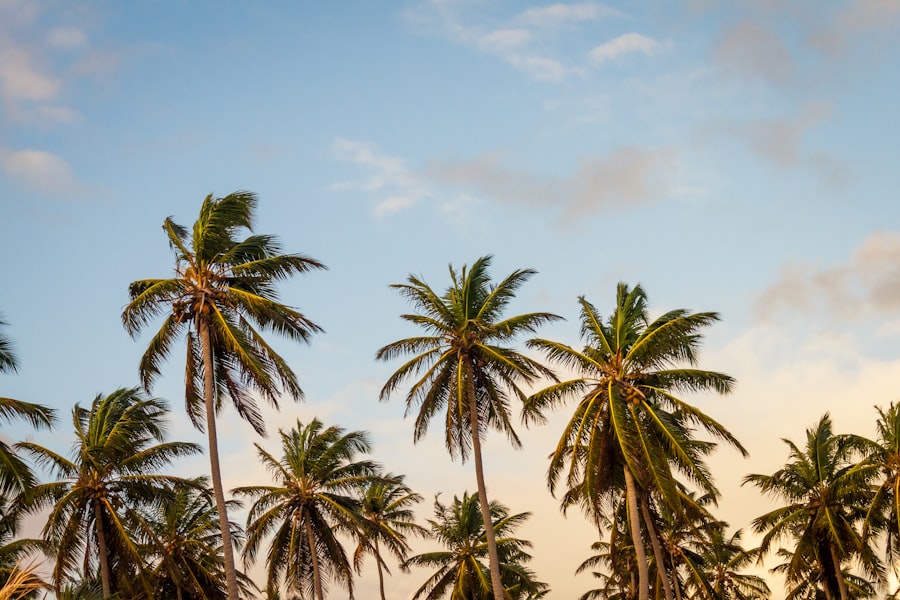
Sebu Island is not only known for its stunning beaches but also for its breathtaking waterfalls that cascade down lush mountainsides. One of the most famous waterfalls on the island is the Tumpis Falls, which tumbles down rocky cliffs into a serene pool below. The journey to Tumpis Falls is an adventure in itself, often requiring a trek through dense forests filled with exotic flora and fauna.
As visitors approach the falls, they are greeted by the sound of rushing water and the refreshing mist that envelops the area, creating a magical atmosphere. Another remarkable waterfall is the Lumbog Falls, which is celebrated for its multi-tiered structure and picturesque surroundings. The water here flows over smooth stones, creating natural swimming holes that invite visitors to take a dip in its cool waters.
The area around Lumbog Falls is often less crowded than other tourist spots, allowing for a more intimate experience with nature. Local guides are available to share stories about the waterfalls’ significance to the community and their role in local folklore, enriching the visit with cultural context.
Immersing in the Culture and Traditions of Sebu Island
| Aspect | Metrics |
|---|---|
| Local Festivals | Sinulog Festival, Kadaugan sa Mactan, and Pintados Festival |
| Traditional Dances | Tinikling, Pandanggo sa Ilaw, and Sayaw sa Bangko |
| Local Cuisine | Lechon, Danggit, and Puso |
| Historical Sites | Magellan’s Cross, Fort San Pedro, and Lapu-Lapu Shrine |
The culture of Sebu Island is deeply rooted in its history and traditions, offering visitors a unique glimpse into the lives of its inhabitants. The island is home to various indigenous groups who have preserved their customs over generations. Festivals play a significant role in community life, with events such as the Kadaugan sa Mactan celebrated with vibrant parades, traditional dances, and music that echo through the streets.
These festivities not only showcase local talent but also serve as a reminder of the island’s rich heritage and resilience. Visitors can engage with local artisans who create traditional crafts using techniques passed down through generations. From handwoven textiles to intricate wood carvings, these crafts reflect both artistic expression and cultural significance.
Workshops are often available for tourists interested in learning these skills firsthand, providing an immersive experience that fosters appreciation for local craftsmanship. Additionally, community gatherings often feature storytelling sessions where elders share tales of their ancestors, imparting wisdom and cultural values to younger generations while allowing visitors to connect with the island’s narrative.
The Thriving Wildlife of Sebu Island
Beyond its stunning landscapes and rich marine life, Sebu Island is also home to a diverse array of wildlife that thrives in its varied ecosystems. The island’s forests are inhabited by numerous bird species, including endemic varieties that attract birdwatchers from around the world.
Conservation efforts are crucial in protecting these species and their habitats from threats such as deforestation and habitat loss. The island’s commitment to wildlife preservation is evident in its protected areas where eco-tourism initiatives promote sustainable practices. Guided tours through these areas allow visitors to observe wildlife in their natural habitats while learning about ongoing conservation efforts.
Local organizations often collaborate with international groups to monitor wildlife populations and educate communities about biodiversity’s importance. This synergy between conservation and tourism not only benefits wildlife but also enhances visitors’ experiences by fostering a deeper understanding of ecological balance.
Indulging in the Local Cuisine and Delicacies of Sebu Island

Here is the rewritten text with 3-4> Indulging in Local Cuisine
Sebu Island’s local cuisine is a rich tapestry of flavors influenced by indigenous traditions and regional ingredients. Seafood plays a prominent role in local dishes, with fresh catches from surrounding waters featured prominently on menus. One must-try dish is kinilaw, a Filipino ceviche made from raw fish marinated in vinegar and citrus juices, often garnished with onions and chili peppers for an added kick.
Traditional Dishes and Street Food
In addition to seafood, Sebu Island offers a variety of traditional dishes that highlight its agricultural bounty. Dishes such as sinigang na baboy (pork sour soup) and adobo (marinated meat stew) are staples that reflect Filipino comfort food at its finest. Street food vendors also provide an authentic taste of local flavors, offering snacks like bibingka (rice cake) and puto (steamed rice cake) that are enjoyed by locals and visitors alike.
Local Markets and Community Spirit
Local markets buzz with activity as vendors sell fresh produce, spices, and handmade goods, creating an atmosphere rich with color and life. Visitors are encouraged to explore these markets not only for shopping but also for engaging with locals who take pride in their culinary heritage. Through food, one can truly experience the essence of Sebu Island—its flavors tell stories of tradition, resilience, and community spirit that resonate long after leaving its shores.
FAQs
What is Sebu Island?
Sebu Island is a small island located in the Philippines, specifically in the Visayas region. It is known for its beautiful beaches, crystal-clear waters, and vibrant marine life.
How do you get to Sebu Island?
The most common way to get to Sebu Island is by flying into Mactan-Cebu International Airport, which is located on the neighboring island of Cebu. From there, you can take a ferry or boat to Sebu Island.
What are the popular attractions on Sebu Island?
Some popular attractions on Sebu Island include the white sand beaches of Bantayan Island, the diving spots in Moalboal, and the historic sites in the city of Cebu. The island also offers opportunities for snorkeling, island hopping, and exploring local culture and cuisine.
What is the best time to visit Sebu Island?
The best time to visit Sebu Island is during the dry season, which typically runs from December to May. This is when the weather is most favorable for outdoor activities and beach excursions.
What are the accommodations like on Sebu Island?
Sebu Island offers a range of accommodations, from luxury resorts to budget-friendly guesthouses and hostels. Visitors can choose from beachfront properties, eco-friendly lodges, and city hotels, depending on their preferences and budget.

